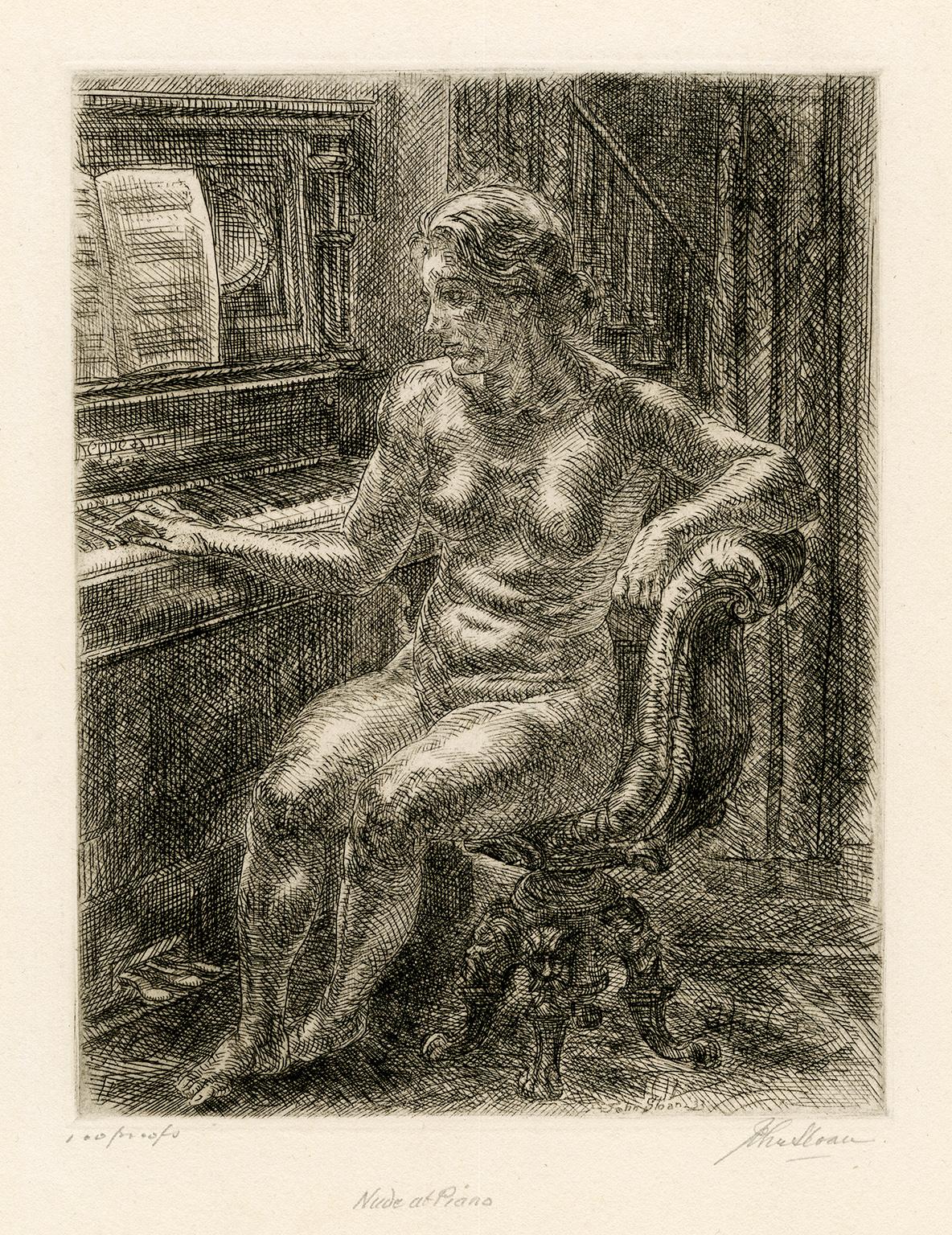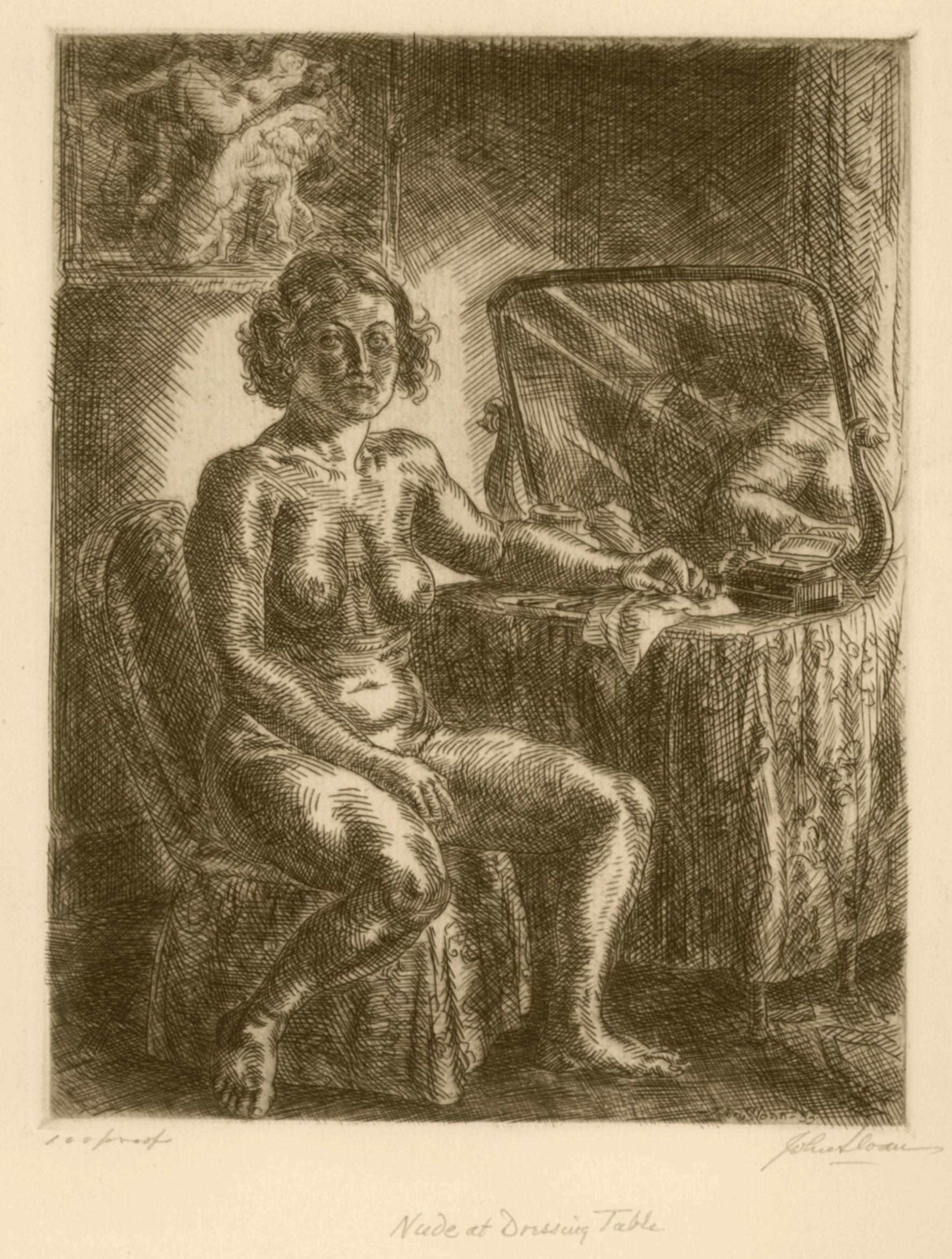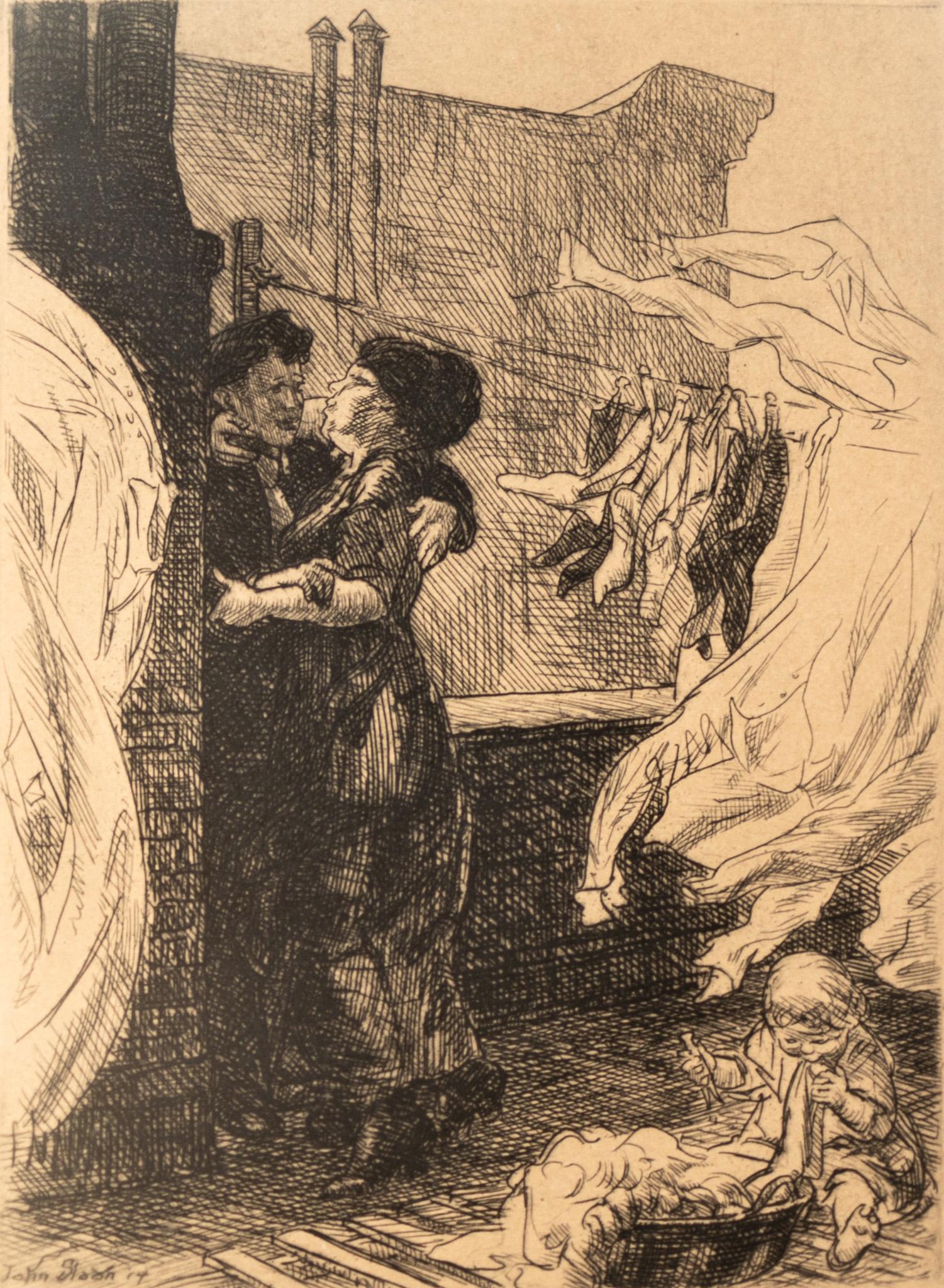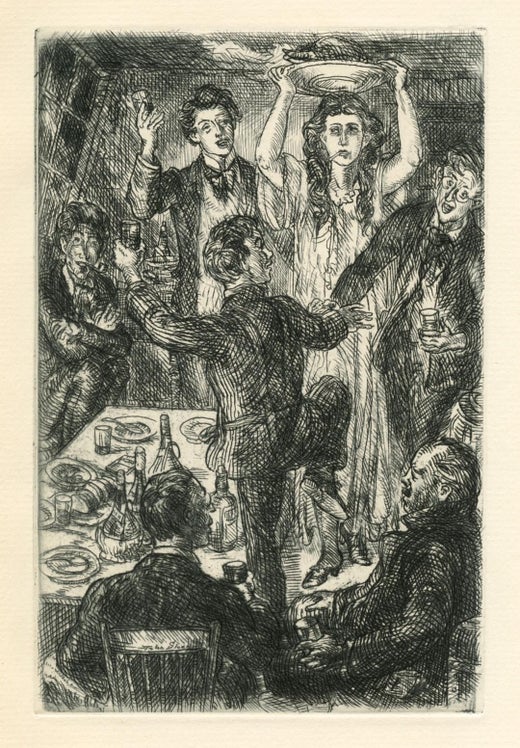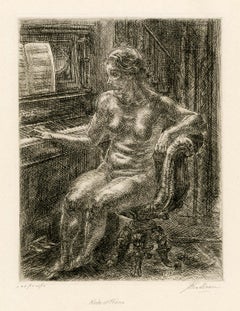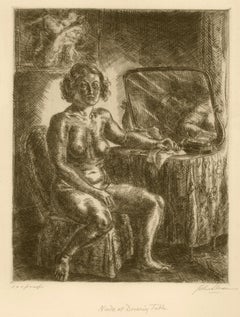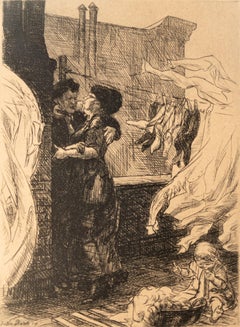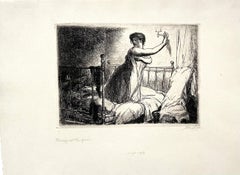Want more images or videos?
Request additional images or videos from the seller
1 of 2
John SloanNude on Stairs1930
1930
$1,800
£1,357.67
€1,568.12
CA$2,521.92
A$2,804.23
CHF 1,468.07
MX$34,254.25
NOK 18,447.71
SEK 17,353.77
DKK 11,705.88
About the Item
John Sloan (1871-1951), Nude on Stairs, etching, 1930, signed in pencil lower right margin, titled in pencil center, inscribed “100 proofs” lower left [also signed in the plate lower left]. Reference: Morse 241, ninth (published) state (of 9). In very good condition, the full sheet with margins (slightest toning in margins), printed in black on a cream wove paper, 9 7/8 x 8, the sheet 14 1/2 x 11 1/2 inches, archival matting.
A superb impression, printing very black and clear.
Provenance: Collection unknown collector, stamp SN in a circle verso (not located in Lugt)
At this point in his career Sloan was experimenting with the use of lines to produce sculptural effects in his prints, drawings, and paintings, and he tried these effects first in his prints. (Some of the great prints and paintings of Rembrandt and Durer had appeared at the Metropolitan Museum in New York, and Sloan – even at this mature stage of his career – became an eager student of these artists.) Of this print he noted: “The etching Nude on Stairs of 1930 is the first important use of super-glazing with linework. There are sets of lines which define the form in light and shade, more which give it sculptural texture, and then there are top-texturing lines which attack the lights and give them greater realization than the eye can see.”
- Creator:John Sloan (1832-1932, American)
- Creation Year:1930
- Medium:
- Movement & Style:
- Period:
- Condition:
- Gallery Location:New York, NY
- Reference Number:1stDibs: LU51531534843
John Sloan
John Sloancame to New York in 1904 and worked for some time as a freelance illustrator. With Robert Henri, he organized an exhibition of a group of urban realist painters, known as "The Eight" or the "Ashcan School," who challenged traditional notions of art. Having moved to the Village in 1912, Sloan lived with his wife Dolly at 240 West 4th Street and at 88 Washington Place.
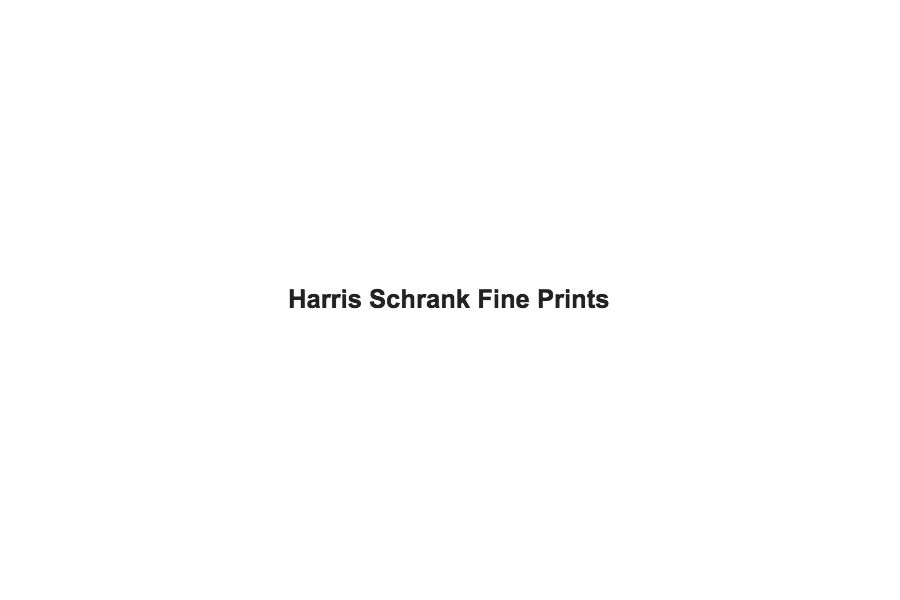
About the Seller
4.9
Recognized Seller
These prestigious sellers are industry leaders and represent the highest echelon for item quality and design.
Gold Seller
Premium sellers maintaining a 4.3+ rating and 24-hour response times
Established in 2000
1stDibs seller since 2016
106 sales on 1stDibs
Associations
International Fine Print Dealers Association
- ShippingRetrieving quote...Shipping from: New York, NY
- Return Policy
Authenticity Guarantee
In the unlikely event there’s an issue with an item’s authenticity, contact us within 1 year for a full refund. DetailsMoney-Back Guarantee
If your item is not as described, is damaged in transit, or does not arrive, contact us within 7 days for a full refund. Details24-Hour Cancellation
You have a 24-hour grace period in which to reconsider your purchase, with no questions asked.Vetted Professional Sellers
Our world-class sellers must adhere to strict standards for service and quality, maintaining the integrity of our listings.Price-Match Guarantee
If you find that a seller listed the same item for a lower price elsewhere, we’ll match it.Trusted Global Delivery
Our best-in-class carrier network provides specialized shipping options worldwide, including custom delivery.More From This Seller
View AllSubway Stairs
By John Sloan
Located in New York, NY
John Sloan (1871-1951), Subway Stairs, etching, 1926, signed, titled and inscribed “working proof 1;” also with the notation “JS imp” in pencil bottom margin [with the name and date ...
Category
1920s American Realist Figurative Prints
Materials
Etching
The Green Hour (or Angna Enters in “The Green Hour”)
By John Sloan
Located in New York, NY
John Sloan (1871-1954), The Green Hour (or Angna Enters in “The Green Hour”), etching, 1930, signed in pencil lower right, inscribed “100 proofs” lower le...
Category
1930s American Realist Portrait Prints
Materials
Etching
Anshutz on Anatomy
By John Sloan
Located in New York, NY
John Sloan (1871-1951), Anshutz on Anatomy, etching, 1912, signed titled and inscribed “100 proofs” by the artist, and also signed “Ernest Roth imp” by the printer. Reference: Morse 155, eighth state (of 8), from the edition of 80. In very good condition, the full sheet, printed in dark brown ink on a brown/tan wove paper, 7 1/2 x 9, the sheet 11 1/8 x 12 3/4 inches.
A fine impression.
Sloan wrote of this print: “Tom Anshutz, our old teacher at the Pennsylvania Academy, gave anatomical demonstrations of great value to art students. Modelling the muscles in clay, he would then fix them in place on the skeleton. Those present in this etched record of a talk in Henri’s New York class include: Robert and Linda Henri, George Bellows, Walter Pach...
Category
1910s American Realist Figurative Prints
Materials
Etching
Fashions of the Past
By John Sloan
Located in New York, NY
John Sloan (American 1871 – 1954), Fashions of the Past, etching and aquatint, 1926, signed and titled by the artist in pencil (Morse 224 IV/IV), also signed by the printer. From the...
Category
1920s American Realist Figurative Prints
Materials
Etching, Aquatint
Romany Marye in Christopher Street
By John Sloan
Located in New York, NY
John Sloan (1871-1951), Romany Marye in Christopher Street, 1922, etching, signed in pencil lower right, titled, dated and inscribed 100 proofs bott...
Category
1920s American Realist Figurative Prints
Materials
Etching
Up the Line, Miss?
By John Sloan
Located in New York, NY
John Sloan (1871-1951), “Up the Line, Miss?”, etching, 1930, signed, titled and inscribed 100 proofs [also signed in the plate]. Reference: Morse 243, fifth state (of 5). In excellen...
Category
1930s American Realist Figurative Prints
Materials
Etching
You May Also Like
Nude at Piano
By John Sloan
Located in Myrtle Beach, SC
John Sloan, 'Nude at Piano', 1933, etching, edition 100, (only 85 printed), Morse 265. Signed, titled and annotated '100 proofs' in pencil. Signed and dated in the plate, lower right...
Category
1930s Ashcan School Nude Prints
Materials
Etching
Nude at Dressing Table
By John Sloan
Located in Middletown, NY
Sloan was so fond of this composition that he made a painting after the etching ten years after its completion, in 1943. Completed in Santa Fe, the painting is now housed in the perm...
Category
1930s American Modern Nude Prints
Materials
Etching
"Love on the Roof" American Realist Etching
By John Sloan
Located in Austin, TX
By John Sloan
American Realist
From the early 20th century Ashcan School which focused on capturing day to day life in New York City during that period.
Image size: 5.75" x 4.25"
Et...
Category
Early 20th Century American Realist Figurative Prints
Materials
Archival Paper, Etching
TURNING OUT THE LIGHT
By John Sloan
Located in Portland, ME
Sloan, John. TURNING OUT THE LIGHT. M. 134. Etching, 1905. 5 x 7 inches; 127 x 178 mm. (plate), 9 1/2 x 11 1/2 (sheet). Titled, inscribed "100 Proofs" and signed, all in pencil. Whi...
Category
Early 1900s Figurative Prints
Materials
Etching
original etching
By John Sloan
Located in Henderson, NV
Medium: original etching. Executed by John Sloan to illustrate the Somerset Maugham classic "Of Human Bondage" and published in 1938 in a limited edition of 1500 by the Yale Universi...
Category
1930s Prints and Multiples
Materials
Etching
Nu Assise by Ludovic-Rodo Pissarro - Nude drawing
By Ludovic-Rodo Pissarro
Located in London, GB
Nu Assise by Ludovic-Rodo Pissarro (1878-1952)
Charcoal on paper
31.3 x 24.2 cm (12 ⅜ x 9 ½ inches)
Signed lower right, L.Rodo
This work of art is accompanied by a certificate of authenticity signed and dated by Lélia Pissarro.
Artist biography:
Ludovic-Rodolphe Pissarro, born in Paris in 1878, was Camille Pissarro’s fourth son. Encouraged by his father, he began drawing from nature at an early age. He was familiarly known as “Rodo” and generally signed his works "Ludovic-Rodo", or early on in his career simply "Rodo".
The impact of Camille’s art and teaching on Rodo was considerable. His artistic production encompassed a wide range of media, including oil painting, tempera, watercolour, gouache, wood engraving, drawing and lithography. Rodo exhibited regularly at the Salon des Indépendants over a forty-year period.
In 1894, at the age of sixteen, Rodo published his first wood engravings in the anarchist journal, Le Père Peinard. When Camille left France for the safety of Belgium during the anarchist upheavals of the same year, Rodo joined him there.
Rodo moved into his first studio in Montmartre with his brother Georges in 1898. Works of this early important period until just after the death of his father in 1903 were post-impressionist and clearly painted under the influence of his father.
By 1904 living in Paris, he found the nightlife and the habitués of the cafes, theatres, circuses and cabarets compelling subjects for his work and changed dramatically the style of his painting, affiliating himself to the Fauve artists. Rodo became close to artists such as Kees Van Dongen, Maurice de Vlaminck and Raoul Dufy. In 1905 he participated in the first Fauve exhibition at the Salon des Indépendants. In 1907 he visited Van Dongen in Rotterdam and the two artists continued to paint together, something they often did in Paris.
In 1914 he married, though he never had children. Later that year at the outbreak of the War Rodo moved to England. Over the next seven years he lived mainly in and around West London. He worked closely with his brother Lucien to establish in 1915 the Monarro Group, formed with the aim of exhibiting work by contemporary artists inspired by Impressionism. Many of the works produced by Rodo while he was in England were of London landmarks but, he was also interested in the urbanisation of West London. After 1921, when Rodo had already returned to France, he divided his time between Paris and Les Andelys in Normandy, living and working closely with his elder brother Georges Manzana.
Despite his rich artistic heritage and his achievements as an artist, Rodo is perhaps best remembered for his contribution to art history. For ten years he researched and compiled a catalogue of his father’s paintings...
Category
Early 1900s Post-Impressionist Figurative Drawings and Watercolors
Materials
Paper, Charcoal
More Ways To Browse
Yayoi Kusama Pumpkin
70s Bed Frame
Antique Prints Sydney
Atelier America Inc
Bearbrick Large
Cattle Brand
Chanel Vintage Watch
Charlie Brown Vintage
David Ward
Fernandez Arman Violin
Fillmore Posters
Frederick And Nelson
Hopi Kachina
Indiana Hope Sculpture
Indonesia Puppet
Indonesian Puppets
Kaws Companion 2020
Keith Haring Eye
